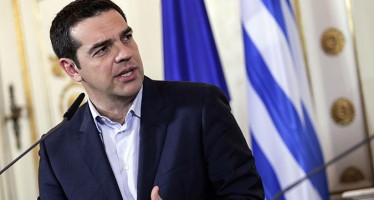WTO on the Future of Trade: It’s All about Convergence
Extracts from an address by WTO Director-General Pascal Lamy, April 24th

Pascal Lamy
According to the Panel, “Regulating trade opening is only one of the many challenges facing a rapidly integrating world economy. But it is also one where we already have a system which has shown its resilience. Like all assets, it needs not just proper maintenance. It also needs investment in the future. We offer this report as a call to action and a contribution to further reflection – action and reflection that we believe are essential to address our current stasis and the real risk this carries of imposing significant economic, social and political costs across the globe.”
This report offers “food for thought” to our members as they think about their medium to long-term trade policies and also about the medium to long-term prospects for this organization.
The report does not offer quick fixes to conclude the Doha Round; it was not intended to do so. What is says about the Doha Round is that there is a political imperative as well as an economic rationale to conclude it. But many of the issues addressed in the report are of direct relevance to unlocking the Doha Round.
The report has three parts:
Chapter 1 looks into how trade can work for growth, development, jobs and sustainable development. It may sound a bit obvious for many of you but the panel felt it was important to start with placing trade in the broader context of a set of other domestic policies that need to be in place for trade to work; “trade as a means, not as an end” says the report.
Chapter 2 looks into what are the shaping factors of trade for the future:
- The continuous technological progress which is at the heart of globalization
- The rise of investment on par with the growth of trade
- The rise in value chains
- The rise of emerging countries: South-South trade was 10 per cent of world trade 20 years ago, now it is closer to one-third of world trade
- The centre of gravity of trade opening is moving South
- The increase in preferential trade agreements and bilateral investment treaties
- Non-tariff measures as “the” obstacles to trade in the future.
So what to do against this background?
Chapter 3 looks into a set of suggestions they freely offer to the WTO members. If I had to capture the essence of their suggestions in one word, that would be “convergence”:
- Convergence of the trade regimes of the WTO members, reflective of the evolution of their progressive economic and social development
- Convergence of the non-multilateral regimes with the multilateral trading system
- Convergence between trade and other public policies, i.e. greater coherence in non-tariff measures
- Convergence of trade and other domestic policies, such as education, innovation and social safety nets.
You may have an interest in also reading…
The Proposals from Greece: Prospects for a Deal Improve Dramatically
New economic proposals submitted by Greece on Monday have been welcomed by euro zone leaders and financial markets around the
PwC, South Africa: Africa Rising
Africa is rising. These days, one cannot pick up a newspaper or magazine without coming across an article or some
Otaviano Canuto, World Bank Group: Walking on the Wild Side – Monetary Policy and Prudential Regulation
Global financial integration and the linkages between the financial and the real sides of economies are sources of huge policy


















































































